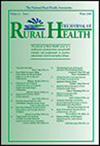Rural and urban differences in disparities in substance use and substance use disorders affecting sexual minority populations
Abstract
Background
Sexual minority populations are at elevated risk for substance use (SU) and substance use disorders (SUD) compared to heterosexual populations. These disparities are theorized to be amplified for rural sexual minority populations due to their increased exposure to minority stress and reduced access to sexual minority communities. However, there is a lack of research examining differences in SU disparities affecting sexual minority populations by urbanicity, and little research has examined differences in SUD treatment utilization by sexual minority status or urbanicity.
Methods
We utilized data from 2015 to 2019 National Survey on Drug Use and Health to examine disparities in SU, SUD, SUD treatment utilization, and unmet SUD treatment need between sexual minority and heterosexual populations and test whether such disparities vary by urbanicity.
Results
Results indicate that disparities in SU and SUD affecting sexual minority populations generalize across urbanicities. A subset of disparities differed by urbanicity, and the direction of these differences varied, with some disparities being stronger in urban than rural populations and vice versa. Despite elevated treatment utilization among some sexual minority groups, disparities in unmet SUD treatment need were prevalent across urbanicities and sexual identity groups.
Conclusions
Study findings highlight the ubiquity of disparities in SU, SUD, and unmet SUD treatment need affecting rural and urban sexual minority populations, while also demonstrating nuanced differences in disparities by urbanicity. The persistence of disparities in unmet SUD treatment need emphasizes the need for future research to identify factors contributing to this disparity and for policies that alleviate these disparities.

 求助内容:
求助内容: 应助结果提醒方式:
应助结果提醒方式:


